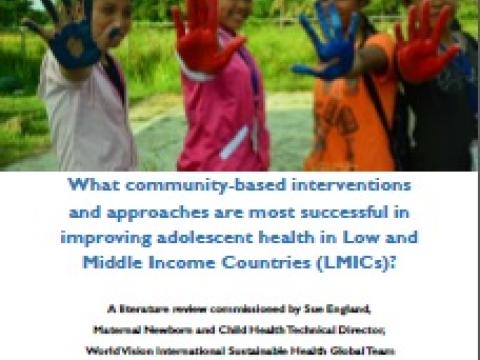Adolescent Health Literature Review
Download
The introduction of adolescent health as a priority in the post-2015 agenda highlights the vulnerability of this age group to a set of health risks previously outside the programming focus of MDG-aligned projects. It has been identified that after the 0 – 5 age group where the majority of preventable childhood deaths occur, proportionally the next age group at risk is the adolescent (10 – 18), and that these deaths are occurring more as a result of injury, violence, self-harm and early pregnancy as they are to childhood causes such as malaria, diarrhoea and respiratory infections. The mortality rate due to HIV is also a shifting statistic as children infected from birth
survive into their teen years. A hidden indicator in adolescent health monitoring is the outcome of behaviour and habits forged during that time that cause damage and reduced life expectancy in adulthood, including genderbased violence, the longterm results of early pregnancy, under/over nutrition and susceptibility to noncommunicable diseases.
This literature review forms part of a series of research for World Vision to understand how best to contribute to the reduction of adolescent mortality and health risk. The review selected 69 relevant case studies from an initial scan of around 120.
The research addressed three main questions:
1. What community-based interventions and approaches are most successful in improving adolescent health in Low and Middle Income Countries?
2. What community-level intervention mechanisms have been most successful in promoting
healthy behaviour change (as an interdependent association with medical health
interventions)?
3. What are success factors and barriers in promoting adolescent sexual and reproductive health
behaviours within faith-based settings?



